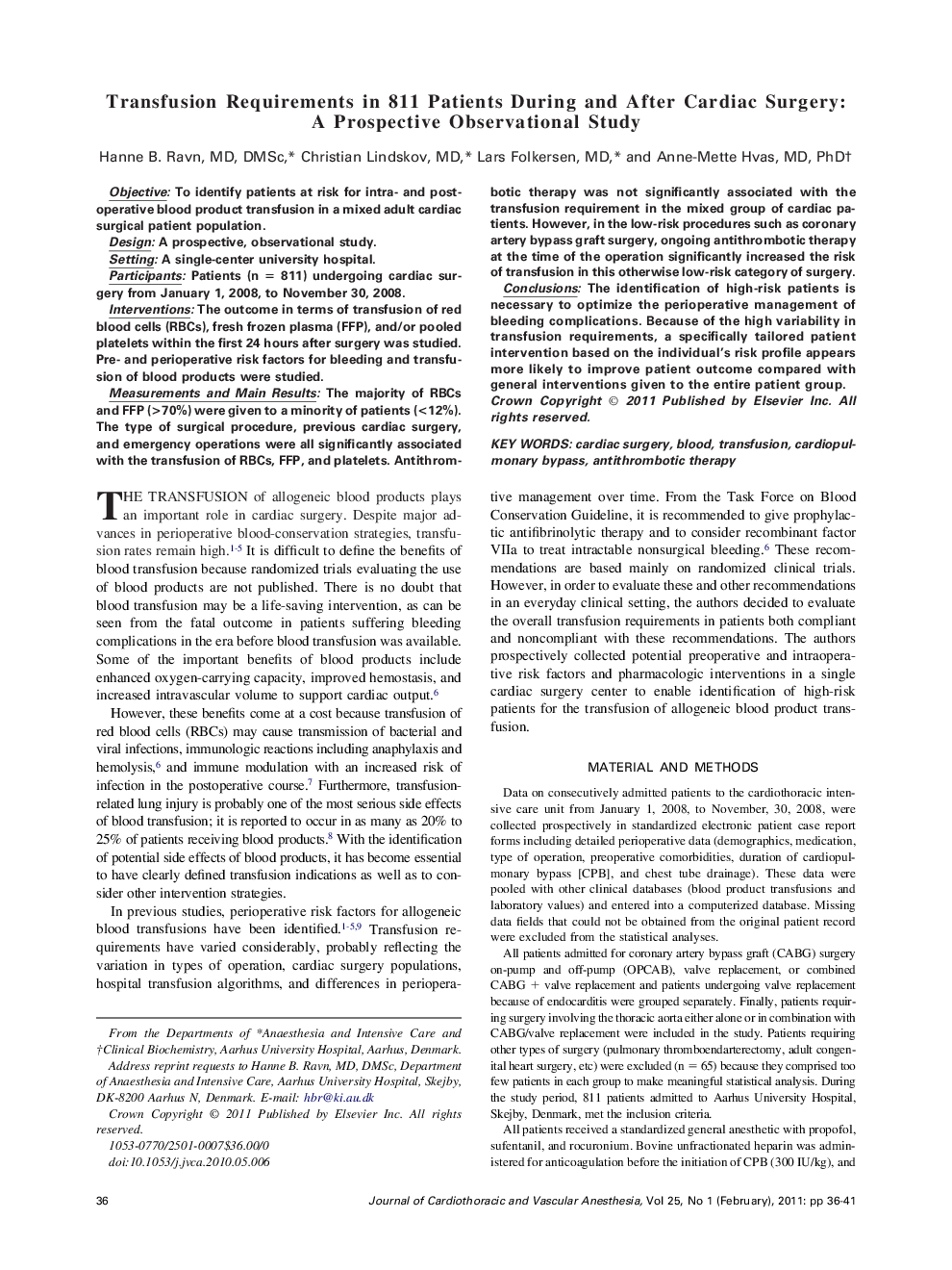| Article ID | Journal | Published Year | Pages | File Type |
|---|---|---|---|---|
| 2760090 | Journal of Cardiothoracic and Vascular Anesthesia | 2011 | 6 Pages |
ObjectiveTo identify patients at risk for intra- and postoperative blood product transfusion in a mixed adult cardiac surgical patient population.DesignA prospective, observational study.SettingA single-center university hospital.ParticipantsPatients (n = 811) undergoing cardiac surgery from January 1, 2008, to November 30, 2008.InterventionsThe outcome in terms of transfusion of red blood cells (RBCs), fresh frozen plasma (FFP), and/or pooled platelets within the first 24 hours after surgery was studied. Pre- and perioperative risk factors for bleeding and transfusion of blood products were studied.Measurements and Main ResultsThe majority of RBCs and FFP (>70%) were given to a minority of patients (<12%). The type of surgical procedure, previous cardiac surgery, and emergency operations were all significantly associated with the transfusion of RBCs, FFP, and platelets. Antithrombotic therapy was not significantly associated with the transfusion requirement in the mixed group of cardiac patients. However, in the low-risk procedures such as coronary artery bypass graft surgery, ongoing antithrombotic therapy at the time of the operation significantly increased the risk of transfusion in this otherwise low-risk category of surgery.ConclusionsThe identification of high-risk patients is necessary to optimize the perioperative management of bleeding complications. Because of the high variability in transfusion requirements, a specifically tailored patient intervention based on the individual's risk profile appears more likely to improve patient outcome compared with general interventions given to the entire patient group.
